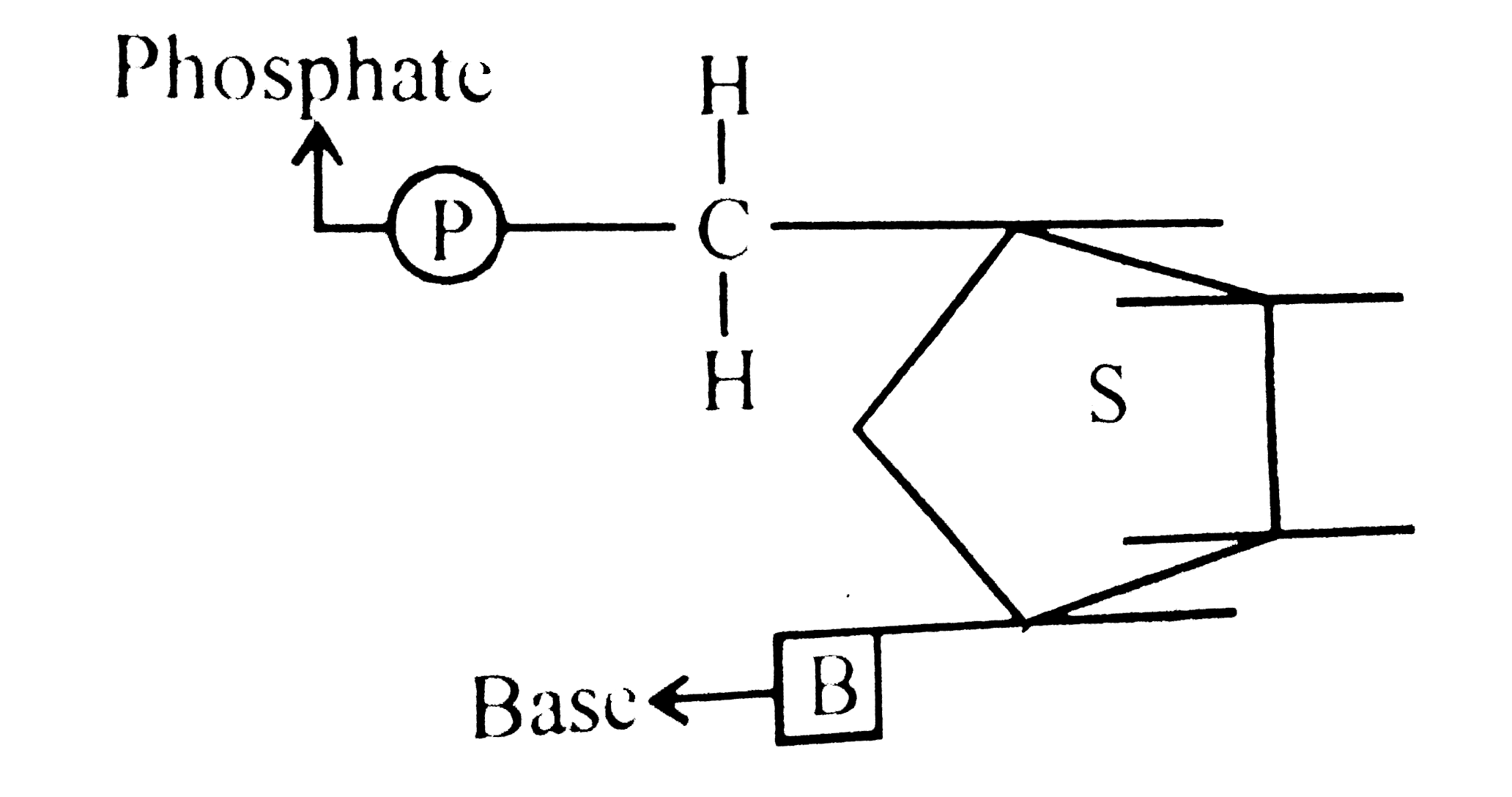Pentose sugar binds with nitrogenous base by bond and with phosphate by bond to form nucleotide.
Phospho-diester, phosphoester
Glycosidic, phospho-ester
Glycosidic, phospho-diester
Glycosidic, peptide
To answer the question regarding the bonds that connect the components of a nucleotide, we can break it down into the following steps:
1. Identify the Components of a Nucleotide:
- A nucleotide is composed of three main components: a pentose sugar, a nitrogenous base, and a phosphate group.
2. Determine the Bond Between Pentose Sugar and Nitrogenous Base:
- The pentose sugar binds to the nitrogenous base through a specific type of bond known as a glycosidic bond. This bond forms when the sugar molecule and the nitrogenous base come together.
3. Determine the Bond Between Pentose Sugar and Phosphate Group:
- The pentose sugar binds to the phosphate group via a phosphodiester bond. This bond is crucial for linking the sugar and phosphate in the backbone of nucleic acids.
4. Final Answer:
- Therefore, the complete answer to the question is:
- Pentose sugar binds with nitrogenous base by glycosidic bond and with phosphate by phosphodiester bond to form a nucleotide.
- A nucleotide is composed of three main components: a pentose sugar, a nitrogenous base, and a phosphate group.
- The pentose sugar binds to the nitrogenous base through a specific type of bond known as a glycosidic bond. This bond forms when the sugar molecule and the nitrogenous base come together.
- The pentose sugar binds to the phosphate group via a phosphodiester bond. This bond is crucial for linking the sugar and phosphate in the backbone of nucleic acids.
- Therefore, the complete answer to the question is:
- Pentose sugar binds with nitrogenous base by glycosidic bond and with phosphate by phosphodiester bond to form a nucleotide.
Topper's Solved these Questions
Similar Questions
Mention the carbon positions to which the nitrogenous base and the phosphate molecule are respectively linked in the nucleotide given below :
View SolutionMention the carbon positions to which the nitrogenous base and the phosphate molecule are respectively linked in the nucleotide given below ?

View Solution
Knowledge Check
A nitrogenous base is linked to the pentose sugar through :
Apeptide bondBHydrogen bondCPhosphate diester bondDglycosidic bondWhich is not having high energy phosphate bond ?
ACreatine phosphateBGTPCATPDAMP.Assertion :- The backbone of polynucleotide chain is formed due to sugar and phosphate.
Reason :- A nitrogenous base is linked to the pantose sugar through a N-glycosidic linkage to formed a nucleoside.AIf both Assertion & Reason are True & the Reason is a correct explanation of the Assertion.BIf both Assertion & Reason are True but Reason is not a correct explanation of the Assertion.CIf Assertion is True but the Reason is False.DIf both Assertion & Reason are False.
Nitrogenous base+sugar=____
View Solution" In a nucleotide unit phosphoester bond is formed between "
View SolutionThe oxide without nitrogen-nitrogen bond is:
View SolutionThe oxide without nitrogen-nitrogen bond is:
View SolutionName the four nitrogenous bases associated with nucleotides of DNA.
View Solution
